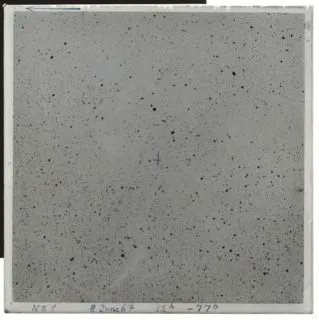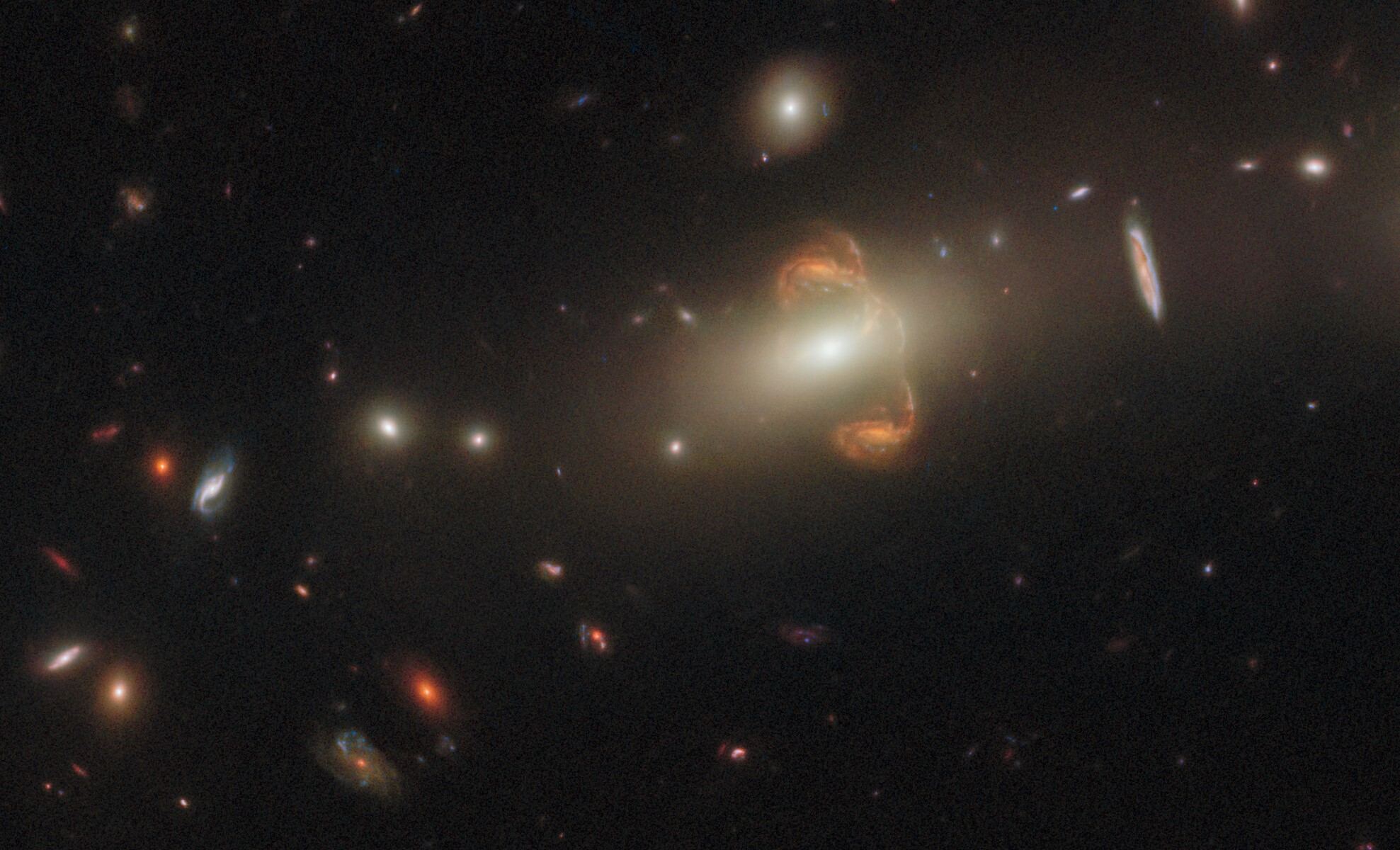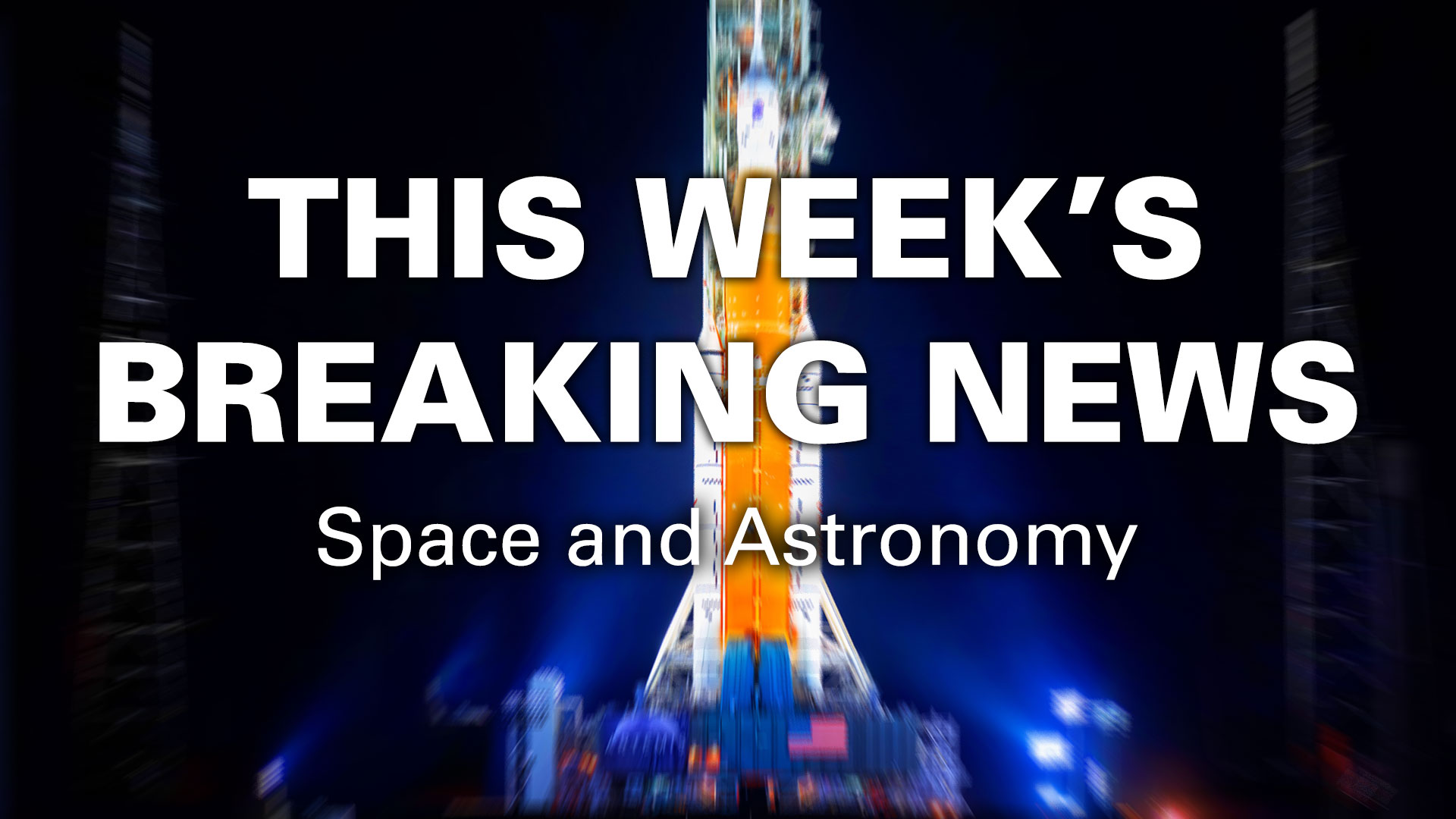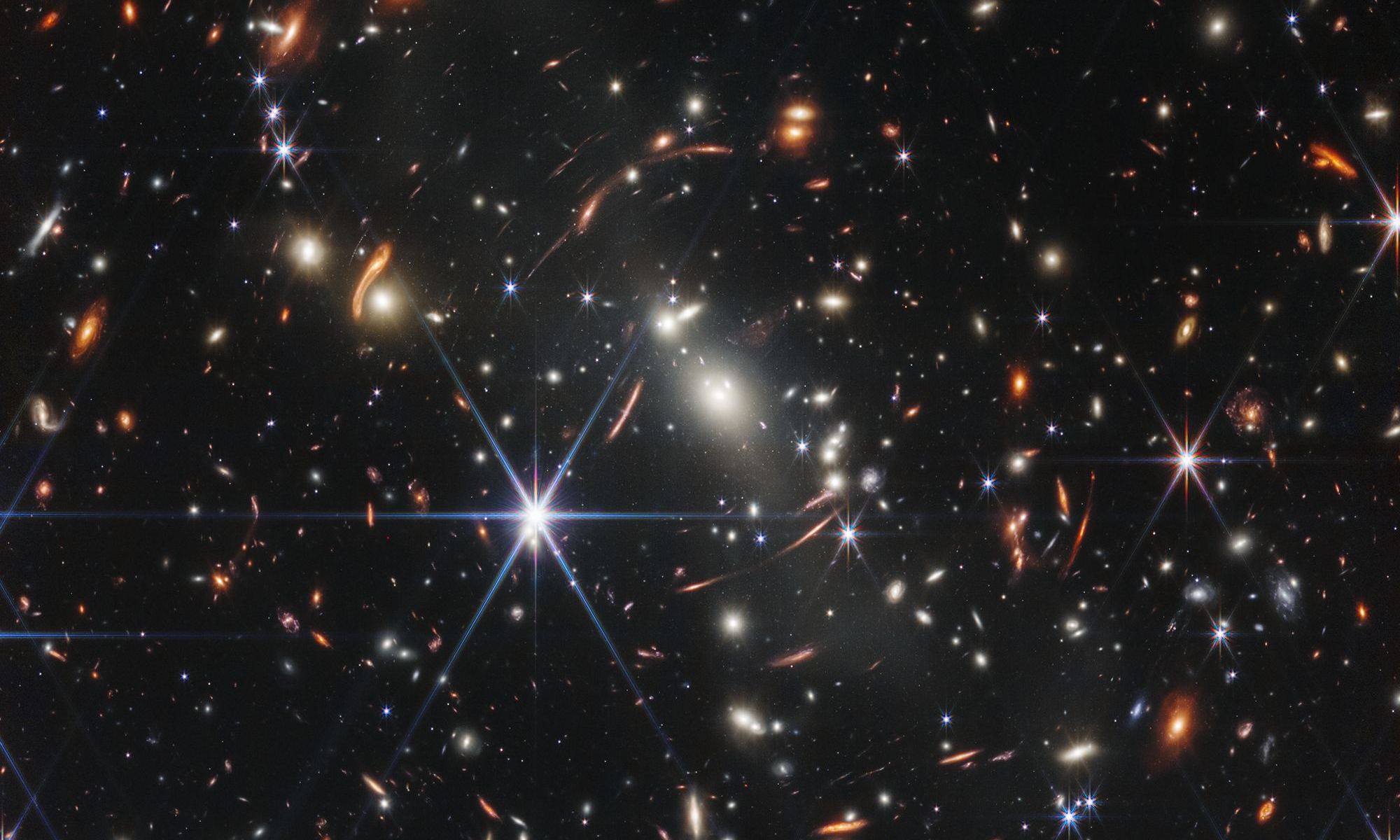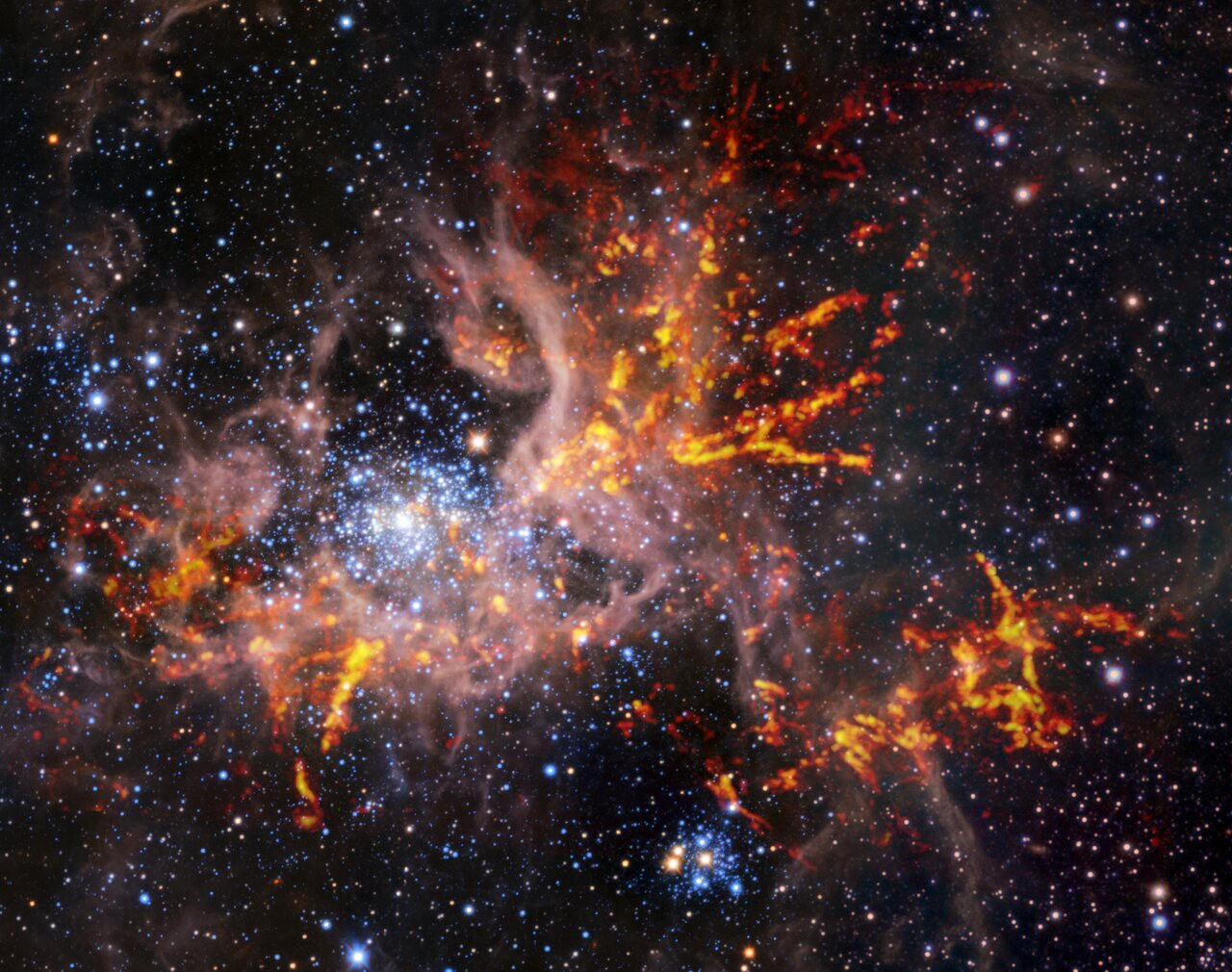Since the early days of the internet, and even computers more generally, there has been a push to collect all of the world’s information, built up over thousands of years, into a digital form so it can at least theoretically latest indefinitely. It also makes that information much more accessible to people interested in it. That was the motto of the original Google search engine, and specialists in various historical fields have been making slow but steady progress in doing just that over the past few decades. Now astronomy has gained one of its largest hauls of historical data as the Friedrich-Alexander University of Erlangen-Nuremberg has digitized 40,000 of its historical astronomical plates, along with 54,090 plates from other sources.
Continue reading “Astronomers Have Digitized 94,000 Photographic Plates of the Night sky, Going Back 129 Years”Hubble Sees a Mirror Image of the Same Galaxy Thanks to Gravitational Lensing
It’s been an amazing couple of weeks for fans of gravitational lensing. JWST grabbed the headlines with a spectacular infrared view of lensing in the SMACS 0723 image, and that had everybody talking. Yet, seeing gravitationally lensed objects is not new. Some can be seen from the ground, and of course, Hubble Space Telescope (HST) has been cranking out views of gravitational lensing for years.
Just a few days ago, HST released another one. It’s a striking view of a distant galaxy called SGAS J143845+145407. It’s the centerpiece of the HST view and appears twice in a mirror image of itself. The galaxy appears a third time, as a very smeared apparition that makes a “bridge” between the other two images.
Continue reading “Hubble Sees a Mirror Image of the Same Galaxy Thanks to Gravitational Lensing”Researchers Create a Plasma Bubble With Lasers That Could Provide Propulsion or an Artificial Magnetosphere
Lasers are useful for a lot of things. They made CDs work (when they were still a thing). They also provide hours of entertainment for cats (and their humans). But they can also create magnetic conditions similar to the surface of the Sun in a lab, according to new research by scientists at Osaka University. And that might help a wide range of other scientific disciplines, ranging from solar astronomy to fusion.
Continue reading “Researchers Create a Plasma Bubble With Lasers That Could Provide Propulsion or an Artificial Magnetosphere”SLS Launch Date, Falcon Heavy Gets Flagship NASA Telescope, Dormant Black Hole
SLS finally gets a launch date for Artemis I, JWST keeps giving the goodness, Percy finds another weird thing on Mars, astronomers find a dormant black hole and NASA will launch a flagship telescope on a SpaceX Falcon Heavy.
Continue reading “SLS Launch Date, Falcon Heavy Gets Flagship NASA Telescope, Dormant Black Hole”NASA Wants Your Help Designing a Starshade to Observe Exoplanets
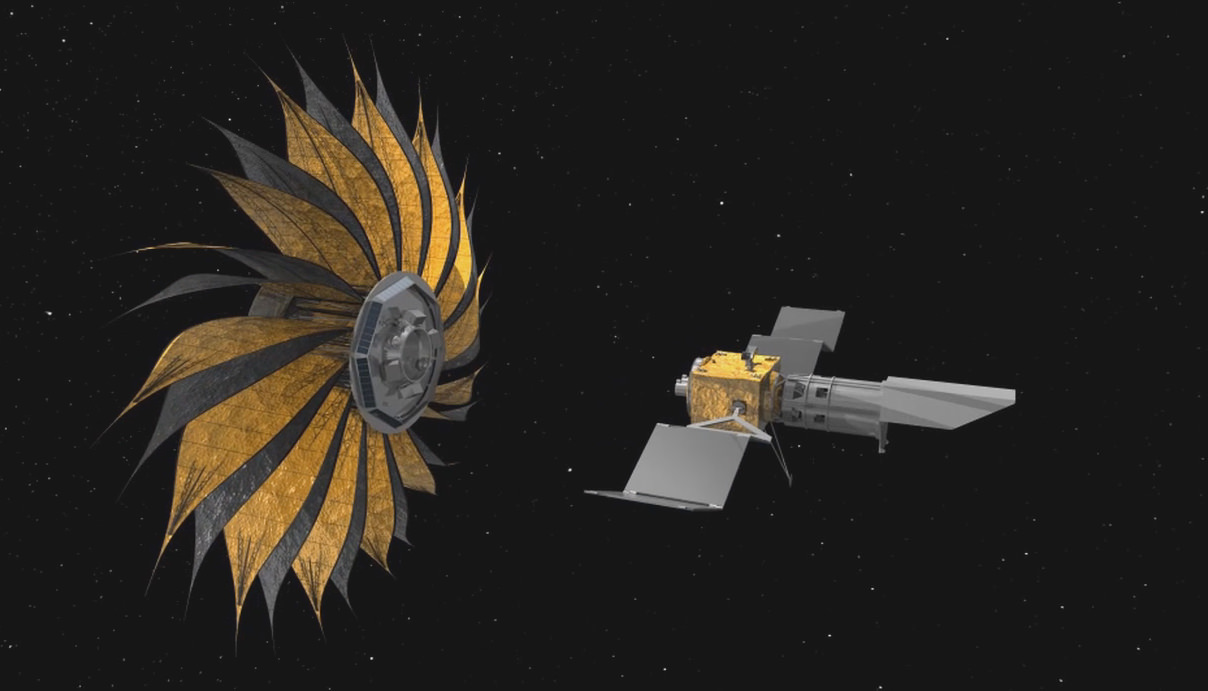
The field of exoplanet study has come a long way in recent decades. To date, 5,063 exoplanets have been confirmed in 3,794 systems beyond our own, with another 8,819 candidates awaiting confirmation. In the coming years, tens of thousands of more planets are expected to be found, thanks to next-generation observatories. The ultimate goal in this search is to find planets that are “Earth-like,” meaning they have a good chance of supporting life. This is no easy task, as rocky planets located within their parent star’s habitable zones (HZs) tend to orbit closely, making them harder to see.
To make this process easier, NASA is designing a hybrid observatory consisting of a “Starshade” that will block out a star’s light so that a ground-based telescope can directly image planets orbiting it. The concept is known as the Hybrid Observatory for Earth-like Exoplanets (HOEE), and NASA is looking for public input to make it a reality. To that end, they have launched the Ultralight Starshade Structural Design Challenge, where participants are asked to develop a design for a lightweight starshade structure that could be used as part of the HOEE concept.
Continue reading “NASA Wants Your Help Designing a Starshade to Observe Exoplanets”Astronomers Have a New Way to Find Exoplanets in Cataclysmic Binary Systems
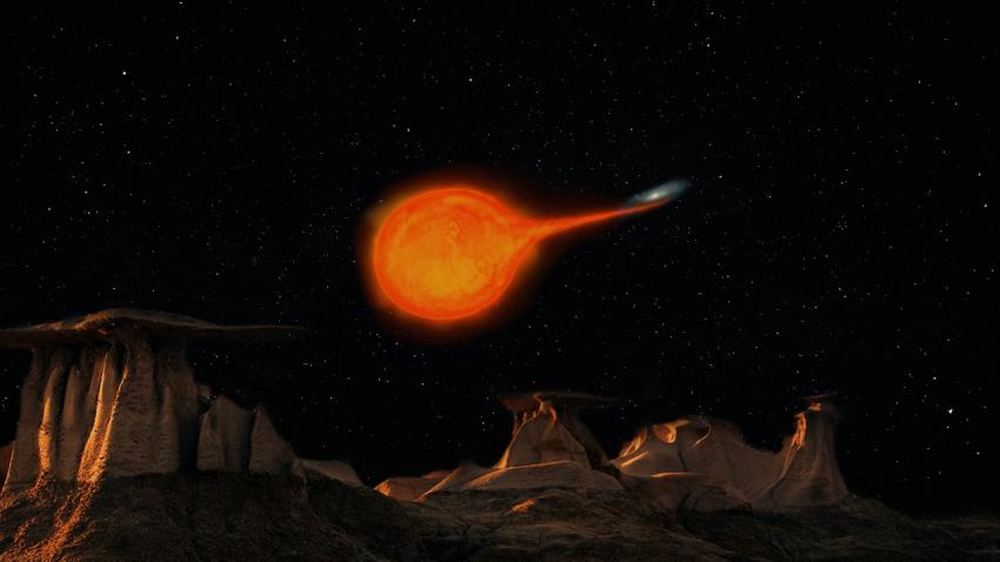
Have you heard of LU Camelopardalis, QZ Serpentis, V1007 Herculis and BK Lyncis? No, they’re not members of a boy band in ancient Rome. They’re Cataclysmic Variables, binary stars that are so close together one star draws material from its sibling. This causes the pair to vary wildly in brightness.
Can planets exist in this chaotic environment? Can we spot them? A new study answers yes to both.
Continue reading “Astronomers Have a New Way to Find Exoplanets in Cataclysmic Binary Systems”JWST Sees the Most Distant Galaxy Ever, Just 300 Million Years After the Big Bang
By now, almost everyone has seen the first-release images from JWST and marveled at these amazing views of the infrared universe the telescope was launched to explore. The view of SMACS 0723 seen above illustrates the promise JWST holds. While there are many more early-release images in the observation pipeline, we’re starting to see the first research papers come out. As expected, studies of distant galaxies are grabbing headlines already.
Wow, are these findings amazing! In the last couple of days, websites and social media have been alive with images of a blob that, in reality, is one of the oldest (earliest) galaxies ever seen. It’s one of two—GL-z11 and GL-z13—that show us what they looked like when the Universe was extremely young, about 300 million years after the Big Bang. When confirmed, they’ll mark a milestone in studies of the infant Universe.
Continue reading “JWST Sees the Most Distant Galaxy Ever, Just 300 Million Years After the Big Bang”Here’s M74 Like You’ve Never Seen it Before, Thanks to Judy Schmidt and JWST
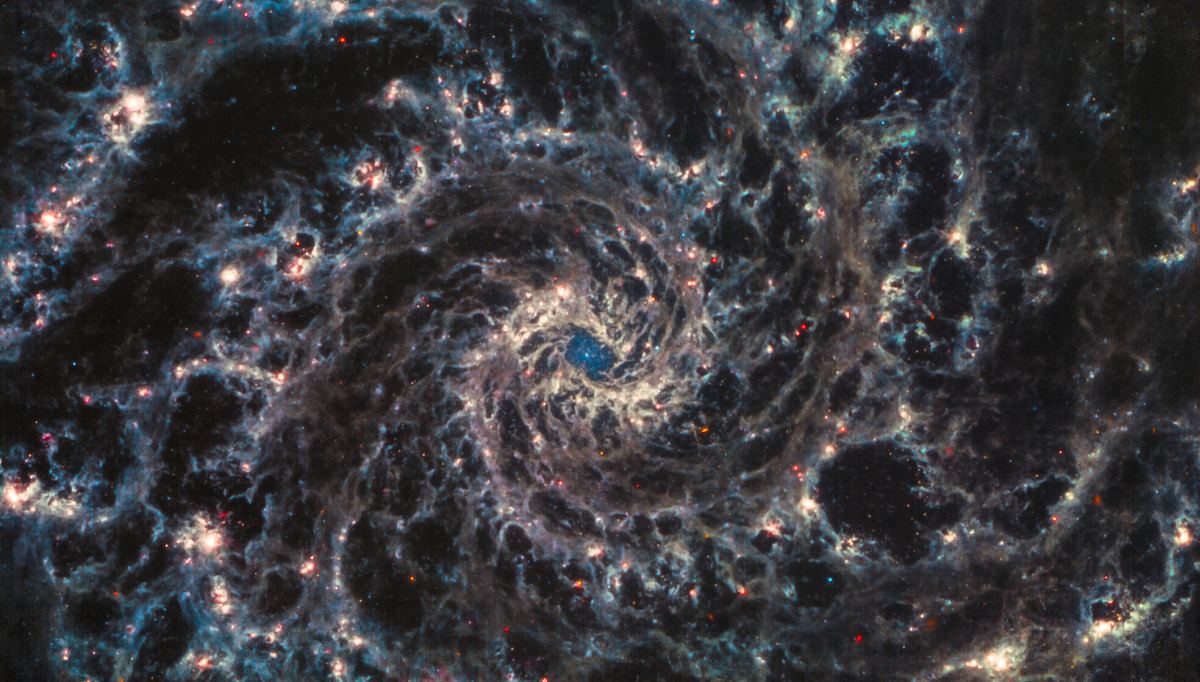
The JWST is grabbing headlines and eyeballs as its mission gains momentum. The telescope recently imaged M74 (NGC 628) with its Mid-Infrared Instrument (MIRI.) Judy Schmidt, a well-known amateur astronomy image processor, has worked on the image to bring out more detail.
Continue reading “Here’s M74 Like You’ve Never Seen it Before, Thanks to Judy Schmidt and JWST”A Dormant Black Hole has Been Discovered Just Outside the Milky Way
What happens when a massive star dies? Conventional wisdom (and observational evidence) say that it can collapse to form a “stellar-mass” black hole. Astronomers detect black holes by the X-ray emissions they emit.
But, what if the black hole isn’t giving off high levels of X-ray emissions? Then, it could be a very rare object indeed: a dormant black hole. Not many of these have been seen. So, it’s exciting to know that a team of astronomers has found one. It’s called VFTS 243. They detected it in Very Large Telescope observations of stars in the Tarantula Nebula, in the neighboring Large Magellanic Cloud.
Continue reading “A Dormant Black Hole has Been Discovered Just Outside the Milky Way”You can see Where JWST Took a Direct hit From a Micrometeorite on one of its Mirrors

The world is still reeling from the release of the James Webb Space Telescope‘s (JWST) first images. These provided a comprehensive overview of the kind of science operations that Webb will conduct over its 20-year mission. They included the most sensitive and detailed look at some iconic astronomical objects, spectra from an exoplanet atmosphere, and a deep field view of some of the most distant galaxies in the Universe. Since their release, we’ve also been treated to glimpses of objects in the Solar System captured by Webb‘s infrared instruments.
Meanwhile, the JWST collaboration released a full report titled titled “Characterization of JWST science performance from commissioning,” in which they examined everything Webb has accomplished so far and what they anticipate throughout the mission. This paper recently appeared online and covers everything from the telescope’s navigation and pointing to the performance of its many instruments. An interesting tidbit, which was not previously released, is how Webb suffered a series of micrometeoroid impacts, one of which caused “uncorrectable change” in one mirror segment.
Continue reading “You can see Where JWST Took a Direct hit From a Micrometeorite on one of its Mirrors”
